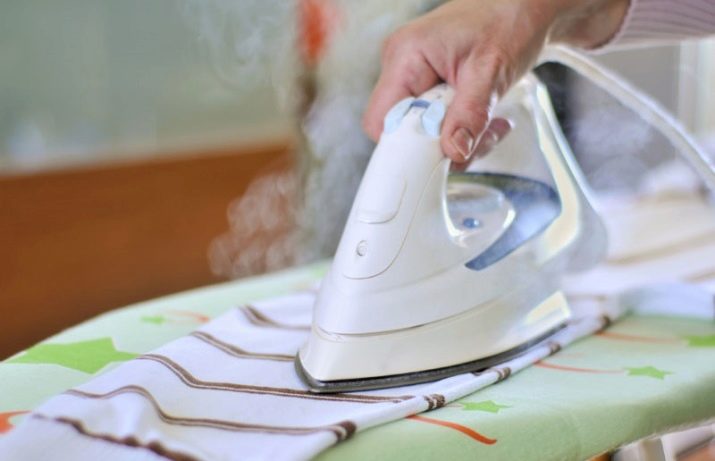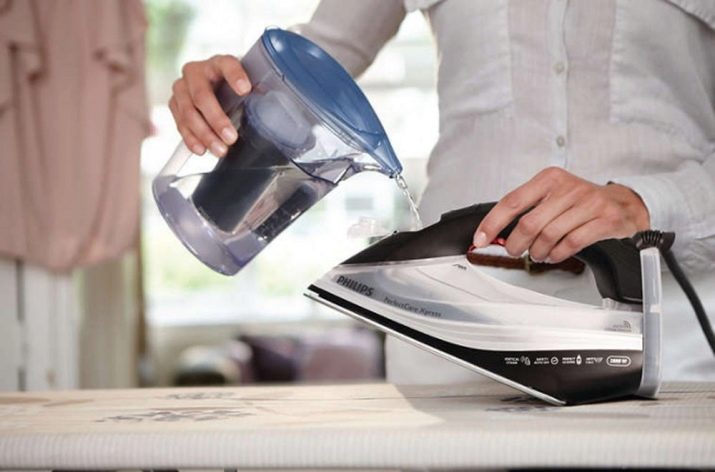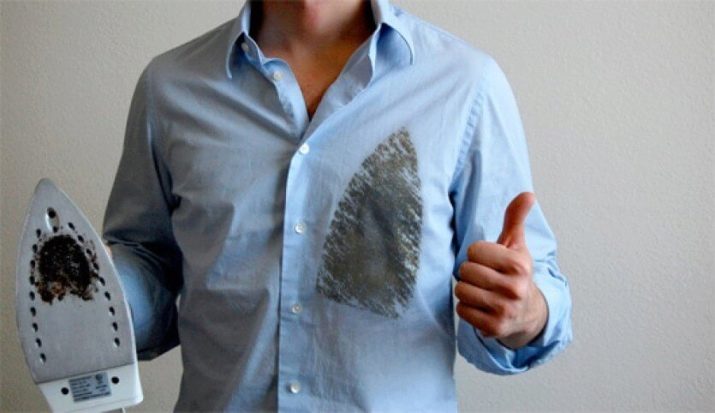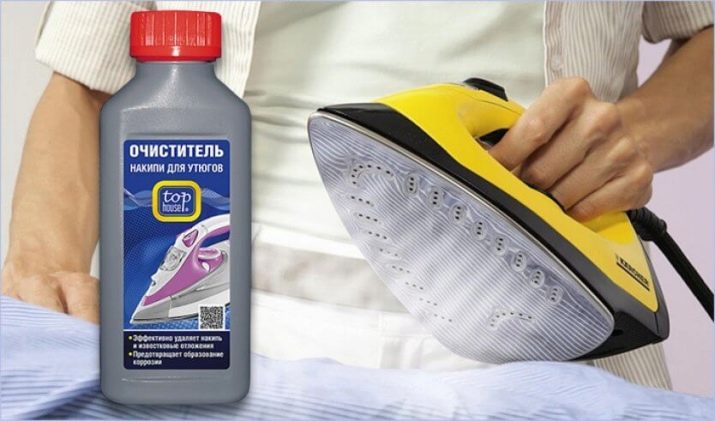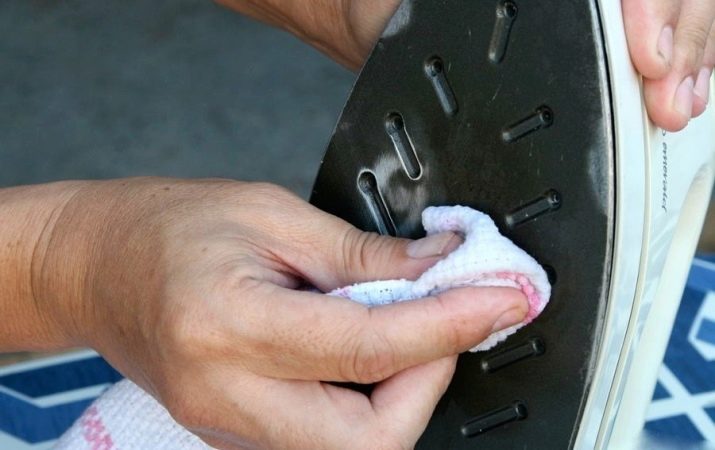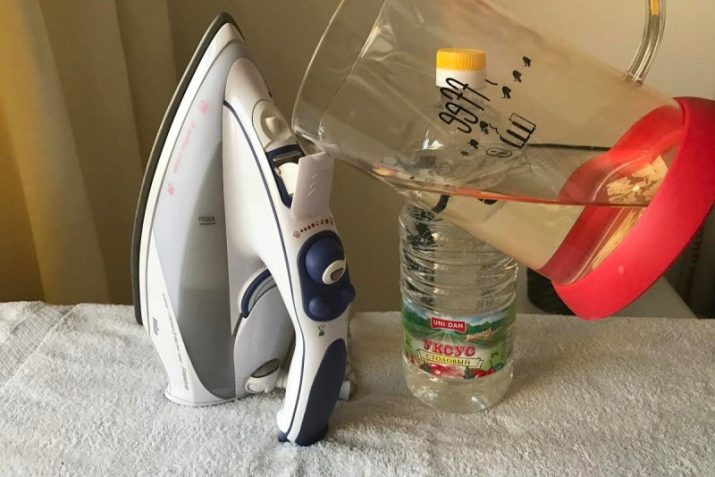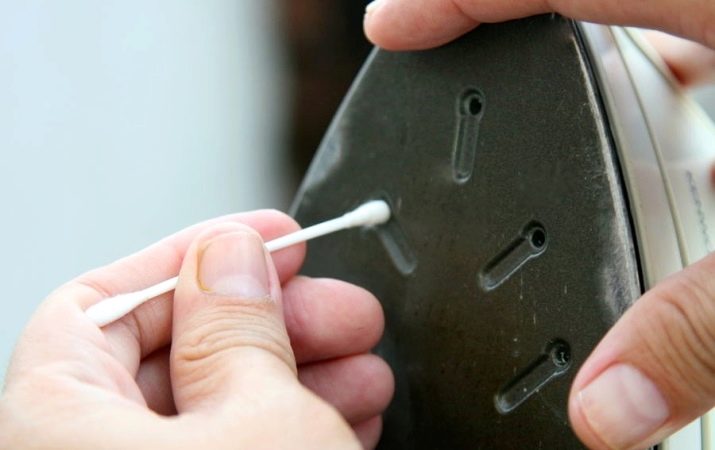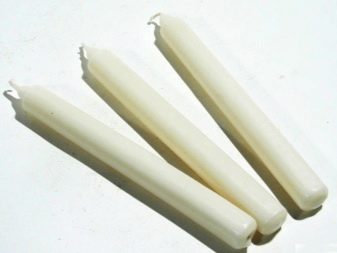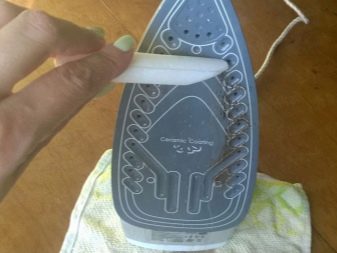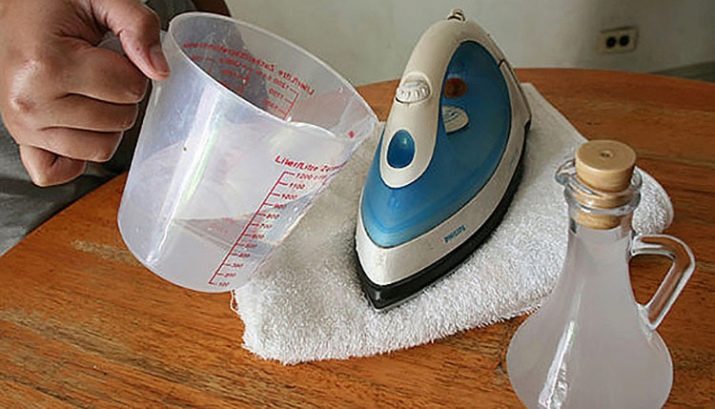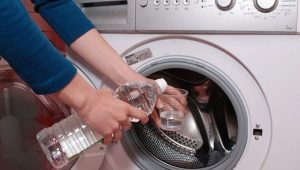How to clean a Teflon-coated iron from burnt fabric?
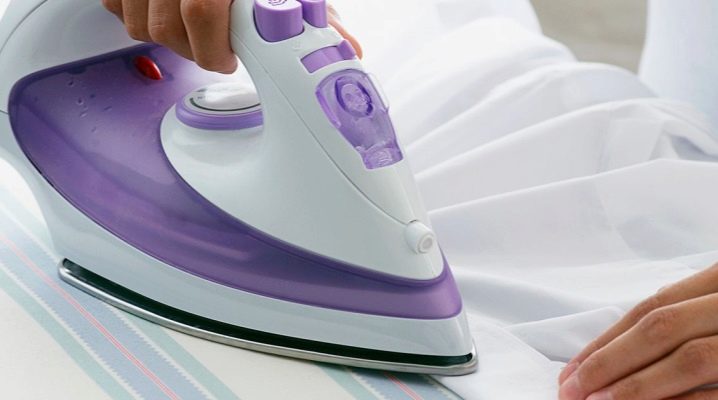
Urgently, when we are going to iron things, we do not always pay attention to what the sole of the iron looks like. In the end, you can get a fabric with yellow-brown traces of unknown origin. Sometimes the reason for this lies in the condition in which the device is located.
Causes of pollution
In order to pollute the sole of the iron, sometimes you need to influence not one, but several factors. Here are a few highlights:
- The most obvious is the non-observance of the conditions of temperature in relation to certain types of tissue. Usually all the information about what kind of care is required for one or another thing is on the label or label. This includes the process of ironing. Usually this icon is indicated by a symbolic ironing with dots that indicate the desired temperature (one corresponds to 110 degrees, two - 150, and three - 200). There are fabrics that can not be ironed even carefully. As soon as you exceed the allowable temperature, the fabric begins to melt or burn with the formation of a substance that remains on the iron.
- Equally important is the correct ironing technique. Do not leave the iron in one place for more than 2 seconds, and even less to wait for it to warm up, putting it on a cloth or other surface with the sole down (there are supports for this).
- Damage and scratches also play an important role. Besides the fact that they can damage the fabric mechanically, the soleplate in the absence of the coating heats up more and ceases to protect things.
It is more difficult to remove dirt from scratches; moreover, there is a risk of making them larger. Therefore, unfortunately, such equipment should be replaced as soon as possible.
- Glue can also get on the iron if you iron the appliqué, or plastic from melted buttons. Therefore, we must remember that it is necessary to iron carefully, in compliance with all the nuances.
- If hard water is poured into the iron, scum may form, which will leave marks on clothing and scratch the coating. And in combination with sticky burnt fabric fibers, it will get a dirty color.
A special feature of the Teflon coating is the lowest among the solids coefficient of friction, while not weighing the subject. Therefore, the iron slides so easily, which facilitates the work of a housewife. Widely advertised non-stick properties actually do not save in emergency cases when it comes to synthetic and delicate fabrics.
Nagar not only soils things; when heated, it emits an unpleasant odor and impairs slip.therefore it is necessary to get rid of it immediately. But this does not mean that you need to throw out the electrical device itself. There are ways that quite successfully cope with this problem.
Household chemicals
The main methods of cleaning the iron are:
- Mechanical (of course, following all precautions);
- With the help of various chemicals.
On sale there are special tools, manufacturers of which promise purity without much effort. The most common are the so-called pencils (this form of release is very convenient and allows you to spend it economically). In addition to fragrances, their composition includes ammonium nitrate, adipic and citric acid. Pencils are:
- Universal (suitable for different surfaces);
- Designed for a particular material.
For Teflon available pencils without abrasive particles. You can read about their availability in the instructions.. It also describes the progress of work:
- First, the device must be heated to 140 degrees and give it a vertical position.
- Apply evenly over the entire surface.
- Wipe clean, preferably cotton cloth.
- If necessary, carry out the procedure again until complete removal of contaminants.
Since there may be an unpleasant smell at this time, the room must have good ventilation, you can wear a mask or respirator. Gloves will help protect your hands from burns, and a blanket or towel that doesn’t make it dirty to keep the ironing board from shedding a pencil.
Another representative of household chemicals that can help in this problem is cleaner for glass ceramic surfaces, microwave ovens, ovens. If the composition does not include aggressive solvents, you can safely use them. They are put on dirt or moistened with a plastic bag and put a cold (!) Iron on it. After that, the surface is wiped with soapy water, a clean, damp cloth and wiped dry.
Home remedies
Of course, a special tool may not always be at hand, so you can use in the following ways:
- For example, using citric acid, which must be dissolved in hot water (at the rate of 20 grams per cup). The cloth soaked in the resulting solution wipes the problem areas. In a running case, it can be left for 20 minutes. Acid can be replaced with ammonia.
- Table vinegar (a spoon on a glass) should be dissolved in a wide container, setting the supports there and putting the iron on them so that the bottom edge of the sole is in the water. After a short soak it needs to be wiped. It is important that water does not get inside.
- Hydrogen peroxide has good cleaning properties. An alternative to it may be a hydroperox tablet. After cleaning, it is necessary to ventilate the room.
- Small specks can be removed, causing a slurry of soda on them.
- You can try methods using toothpaste, baby cream or tooth soap. About them left a lot of positive feedback.
During cleaning, the holes for steaming should be given special attention - for this purpose, cotton swabs will do. After cleaning, you need to pour water inside the iron and repeatedly press the steam button to finally clean the holes.
Some tools can be used to wipe other parts, including the case.
Mechanical cleaning
One of the drawbacks of Teflon coating is its relatively low strength. It is easily scratched and torn. That is why, in order to prevent the violation of integrity, it is impossible to apply different brushes and abrasives to it. The exception is the chalk, which must be crushed and try to polish them stuck synthetics.
Another acceptable tool can be a spatula - wooden or teflon, so as not to melt and not aggravate the situation. The bulk of the adhering fabric can be removed immediately after it sticks or by heating the iron again. All movements should be gliding, without pressure and impacts.
The remains of the burn can be cleaned with paraffin. To do this, you can take the usual candle and rub it on the sole. After that, the device is heated. When the wax begins to melt, you need to hold them several times on the waste fabric made of cotton or flax. Paraffin must be wiped off with burnt material. Holes can be plugged with cotton pads or thoroughly cleaned with steam.
Useful tips
The problem is easier to prevent than to fix, so it is important to study the instructions for the device. or use our tips:
- Much depends on the type of fabric. Care should be taken to silk (natural and artificial), jersey, satin, twill, nylon, polyester. If in doubt, it is better to clarify the information, since some things can not be ironed at all.
- Be careful with the embroidery, sequins, locks, buttons, rivets. Such clothes are ironed from the inside, so that the surface of the iron is not damaged.
- Do not rest the hot appliance against plastic and textile furniture surfaces, walls, and lay it on the floor, since some types of substances cannot be removed at all.
- In order not to form scale, it is necessary to use specially designed for this water or liquid. And the plaque already present inside the iron can be removed with vinegar.
If you still appear on the fabric of the burn, you should:
- Do not waste time. The sooner you start cleaning, the better, because frozen and eaten marks are more difficult to remove.
- Clothing can be reanimated by applying a solution of boric acid on a scorch mark or wiped with a cut of a bulbous head, and then washed in the usual way. In case the tissue is slightly affected, soak it in a solution of borax (tablespoon per liter of water). After rinse and dry. Serious damage, unfortunately, can be masked only with stripes or decorative patches - good, they do not lose their relevance.
How to clean the iron with a Teflon coating, see the following video.
